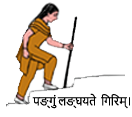Some patients do not show desired response to established drugs. Therefore, continuous efforts for finding more effective and less harmful remedies are ongoing all over the world. This fact is especially true in cases of inflammatory arthritis where new research has made many new effective drugs available and will keep on bringing in more and more new drugs.
Fundamental research involves preparing thousands of molecules that work against the primary pathological process in laboratories. One out of hundred drugs is then tested in animals. About 2-3 % of drugs effective in animal studies are then tested in human clinical trials. There are four phases in clinical trials. The first phase involves testing for the harmlessness of the drug and finding its appropriate dose in healthy volunteers. Some 200-300 patients are then selected in the second phase and are administered either the drug or a placebo. The effectiveness, dose, and adverse effects of the drug are studied in this phase. In the third phase, hundreds of patients from many centers worldwide are selected and studied over a prolonged period. A new drug is required to be statistically more effective than a placebo. Then and only then does the administration allow marketing of that particular drug. Thus, just one or two drugs amongst 5-10 tested in clinical trials arrive in the market. This whole process takes 10-12 long years and involves an expenditure of crores of Rupees. The fourth phase of clinical trials includes post-marketing surveillance. Restrictions are imposed on any drug that is found to have adverse effects that were previously unnoticed. Rofecoxib, a pain killer, was thus banned, and restrictions were imposed on the use of Nimesulide.
No single new drug can enter the market unless this whole process of research is completed. New drugs are expensive due to the enormous costs involved in drug research. The patent for a new drug expires after 20 years. Thus, companies get just about 8-10 years to recover research and marketing costs. Other companies manufacture a similar drug and compare it with the parent drug over a much shorter period after the patent expiry. These biosimilar drugs are much cheaper but may not necessarily be equally effective. But market competition indeed brings down prices of these drugs for the benefit of patients.
Clinical research of global standards is being conducted at various places in India too. The patients who do not improve on currently available drugs may freely volunteer in such research as an alternative. The process of clinical drug trials starts with providing entire information about the drug and obtaining audiovisual recorded consent from the patient. Patient consent is an essential prerequisite, and no drug can ever be administered without such consent. The ongoing treatment is not stopped even if the patient denies consent. Any patient can withdraw consent without any explanation during the trial if he or she feels uncomfortable due to any reason. The trial drug is provided free of cost. Carefully performed laboratory tests are also free of charge. The safety of a patient is the essential condition for all clinical research. The local ethics committee or institutional review board, too, has an utmost concern about patient safety. Patients are fully compensated under the insurance scheme if any adverse event occurs, whether drug-related or unrelated. The legal language of the consent document may sound very complicated due to international regulations. Patients need not worry about various adverse effects of the drug mentioned in the consent document. If one tries to find a place by going by a route and does not find it, one tries to find another path to reach the place. So is the case of participation in clinical trials. The patients participating in the research are genuinely participating in the progress of medical science. They help in providing a new drug to patients. This charity is similar to that of a blood donor giving life to a patient.
